Forced off the fence.
It is 1861.
The question of secession has deeply divided the people of Missouri.
The state entered the Union in 1821 as a slave state and Southern sentiment dominated rural parts of the state.
But St. Louis was pro-Union.
Missouri’s new governor, Claiborne Jackson, a Democrat who had supported Stephen Douglas over Lincoln in the recent election, was a plantation owner who enslaved 38 people.
He had campaigned for governor as a moderate on the secession issue.
But in his January 1861 inaugural address, he claimed Missouri’s destiny lay with the South, warning the state would secede if the North used force against the South.
And he called for a state convention to adopt a Missouri secession ordinance.
But the convention defied Governor Jackson, voting against secession and calling for Missouri to remain neutral.
But Jackson would not be deterred.
When President Lincoln called for militia volunteers after the fall of Fort Sumter, Jackson declared Lincoln’s request “illegal, unconstitutional and revolutionary.”
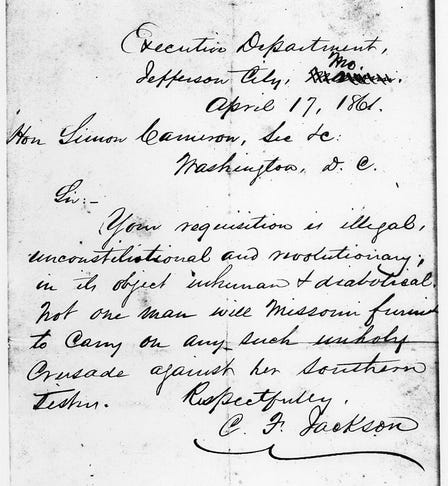
Jackson ordered part of the Missouri militia to report to Camp Jackson, a training camp near St. Louis, and he sent secret emissaries to Confederate President Jefferson Davis.
The Union commander in Missouri, Brig. Gen. Nathaniel Lyon, learned that the troops in Camp Jackson were planning to raid the federal weapons arsenal in St. Louis and that the camp had received a secret shipment of four cannon from the Confederate state of Louisiana.
So, Gen. Lyon ordered his Union troops to encircle the camp.
They were bolstered by a group of German immigrants — untrained, without uniforms, and German-speaking— who had volunteered to join a pro-Union militia organized by Missouri Rep. Frank Blair.
Together, this combined force of 8,000 captured Camp Jackson and marched the 1,200 camp militiamen through the streets of St. Louis.
Spectators jammed the streets to watch the spectacle.
Some in the crowd taunted the German volunteers, throwing rocks and jeering “Damn the Deutsch.”
Then, a drunk onlooker accidentally fired his gun.
Crossfire broke out and, within minutes, 28 people lay dead and many more were injured.
Rumors spread that the Germans were planning to murder the American population of St. Louis.
Riots broke out across the city.
The mayhem finally ended with the arrival of federal troops and the imposition of martial law.
With political violence in their own streets, Missouri fence-sitters were forced to choose sides.
What had been just politics had become real and personal and no one was undecided on secession anymore.
[Today’s shocking Supreme Court decision will do the same to many who were previously undecided in the 2024 election.]
Union supporters would call this event the “Camp Jackson Affair.”
And Southern sympathizers would forever call it the “Camp Jackson Massacre.”
It was a microcosm of the coming national conflagration, where the only thing which was universal was bitter misery.
******************************
I’ll see you tomorrow.
— Brenda





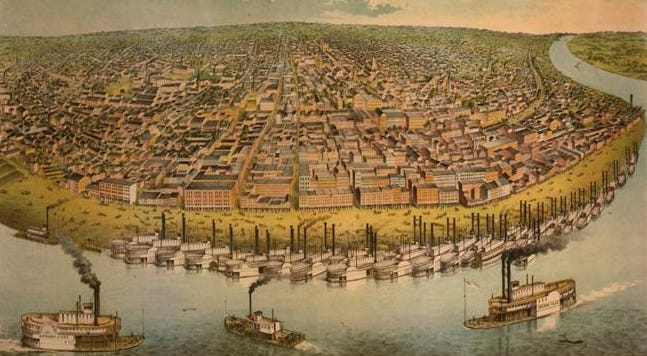
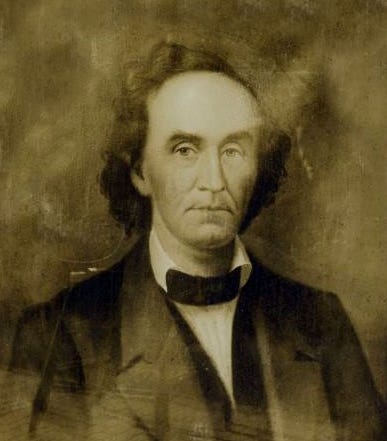
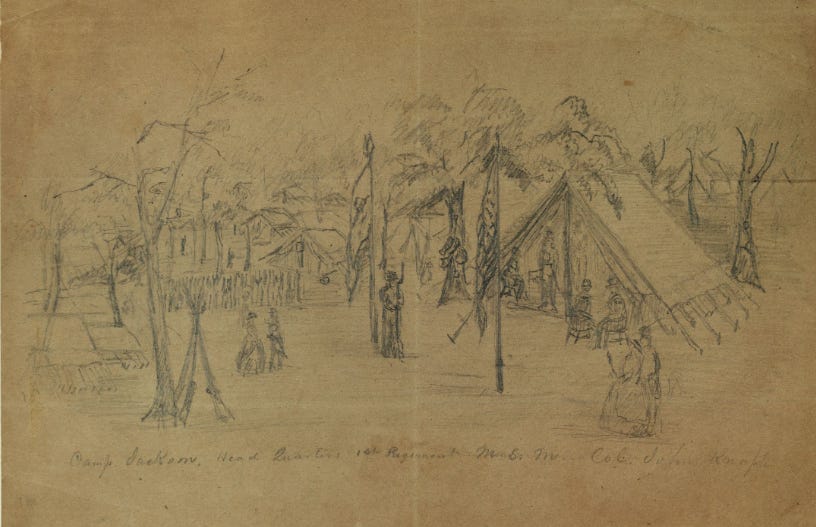
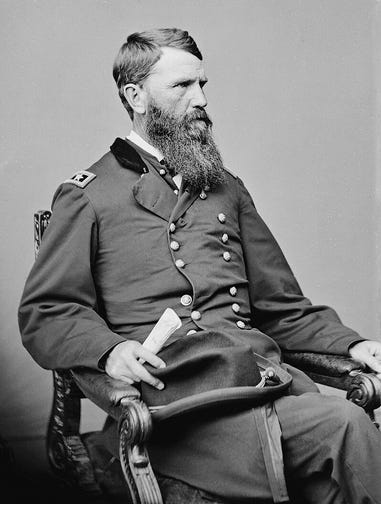
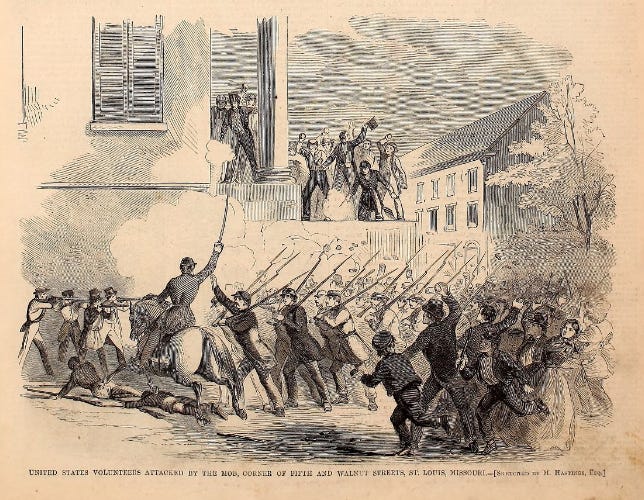
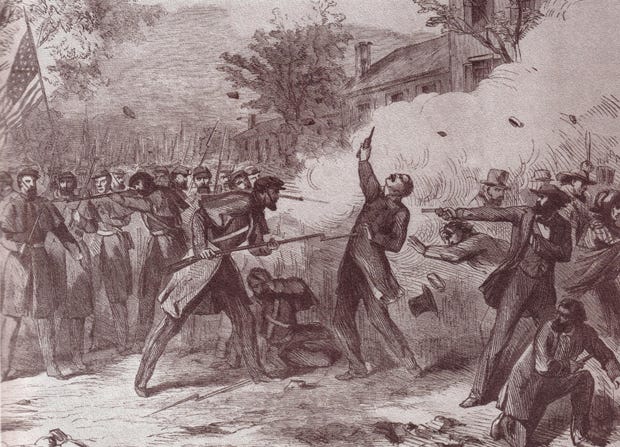
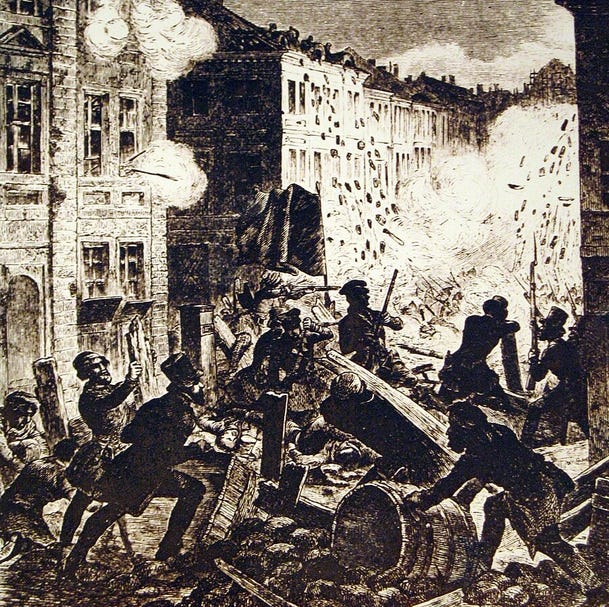
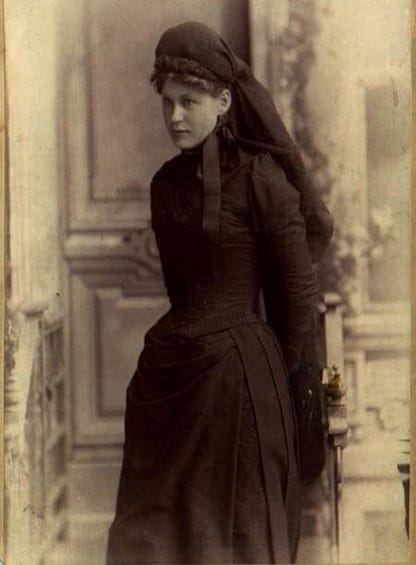









Share this post